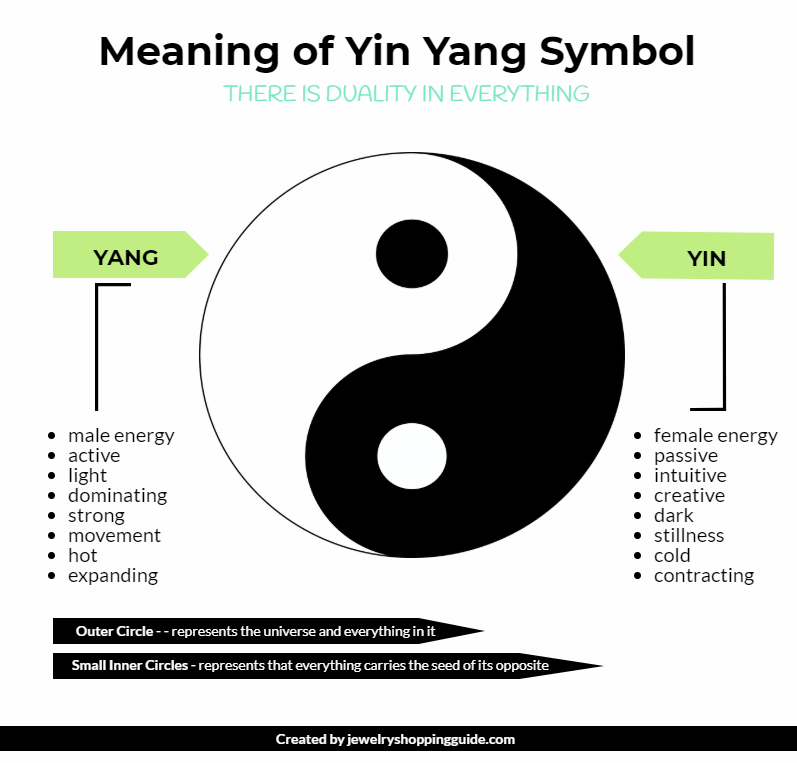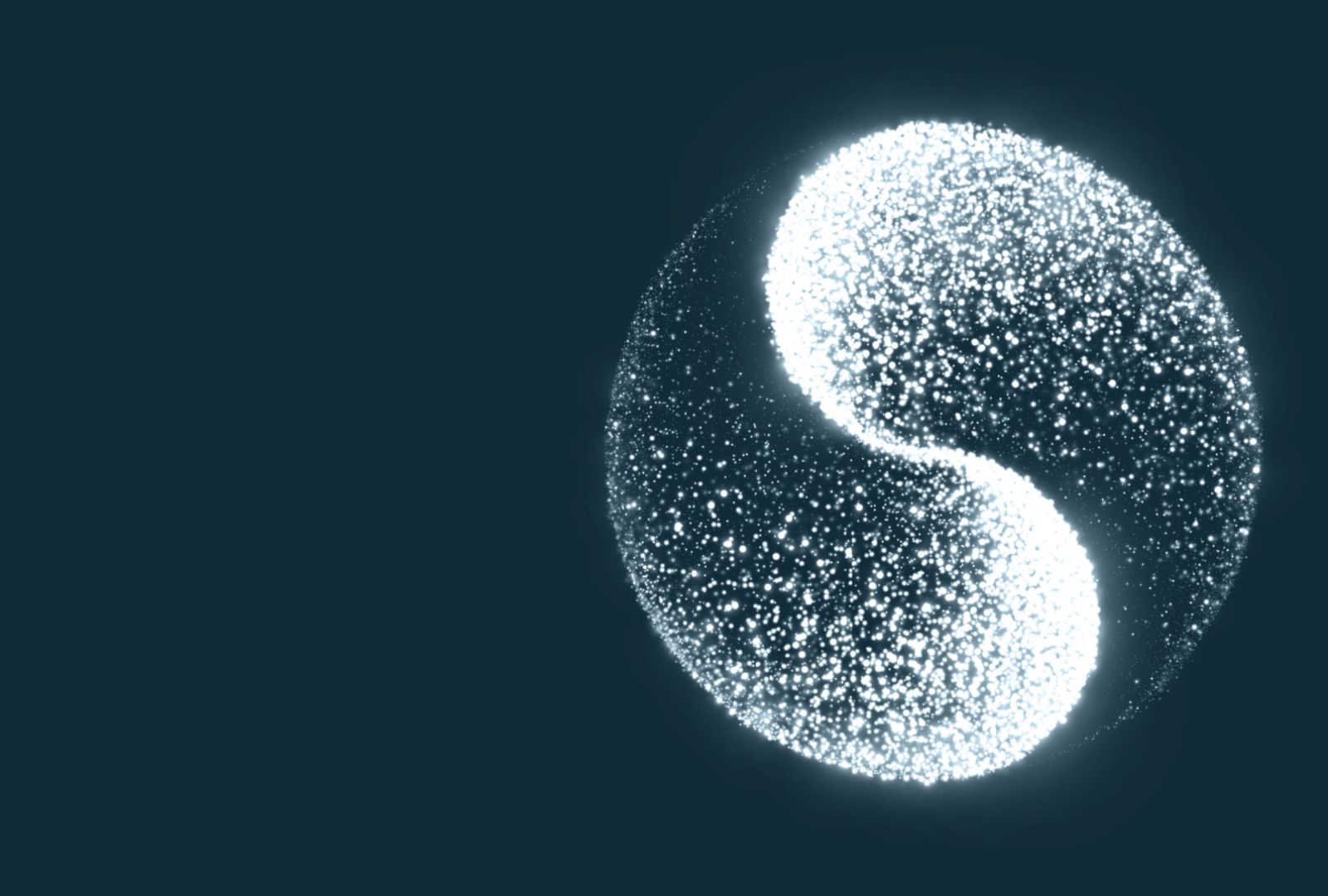


Yin and Yang are interdependent upon each other so that the definition of one requires the definition for the other to be complete. For example, day becomes night and then night becomes day. Each aspect contains the beginning point for the other aspect. Nothing is completely Yin or completely Yang. The taijitu symbol has been found in more than one culture and over the years has come to represent Taoism. Most people just call it the yin yang symbol in the west. The symbol for Yin Yang is called the Taijitu. Over thousands of years, quite a bit has been sorted and grouped under various Yin Yang classification systems. As examples: night (Yin) and day (Yang), female (Yin) and male (Yang). We encounter examples of Yin and Yang every day. Yin Yang is the concept of duality forming a whole. The word Yin comes out to mean “shady side” and Yang “sunny side”. Both halves are chasing after each other as they seek a new balance with each other. So when you split something into two halves – yin/yang, it upsets the equilibrium of wholeness. When something is whole, by definition, it’s unchanging and complete. Yin and yang are also the starting point for change. What is Yin / YangĪ starting definition: Yin / Yang: Two halves that together complete wholeness. All of the Five Phases are aspects of Qi.Yin Yang is perhaps the most known and documented concept used within Taoism. The triple burner is subsumed into the fire element.Īll of these organ systems function independently and in relation to each other.

Each pair is affiliated with one of the Five Phases: These repeated movements are expressed at every level - from the rotation of the planets to the behavior of internal organs.Įach of the Yin organs is paired with a Yang organ, and these pairs share specific meridian pathways, tissues, muscles, and energetic functions. The movement through these phases is reflected in both the external environment and the human internal environment. These elements correspond with the stages of human life: birth, growth, maturation, death, and rebirth. These phases represent the seasons of the earth, characterized as wood, fire, earth, metal, and water. The Five Phases theory further differentiates this dynamic into five stages of transformation. Yin and Yang define the universe as the interaction of polar opposite forces. The Five Phases: Wood, Fire, Earth, Metal, and Water The infinite number of clinical disease manifestations are ultimately understood and treated in accordance with their Yin and Yang nature. The nature of the disease and the body's response (or lack of response) are analyzed in terms of Yin or Yang. Imbalance of yin and yang accounts for the development and emergence of all disease. Qi is Yang in nature: vital, active, energetic, etheric.

Blood is Yin in nature: fluid, nourishing, moistening, substantial. The two primary substances of the human body, Qi and blood, are also described in terms of Yin and Yang. Triple burner (a functional organ that does not have a physical structure)Įach of these organs contains with it Yin and Yang aspects.For instance, there are five Yin organs and six Yang organs: Chinese medicine sees the human body as a whole, the component parts of which may all be analyzed in terms of Yin and Yang. The Human Body in Terms of Yin and YangĪll phenomena in the universe can be described in terms of Yin and Yang. This system was fundamental to all natural sciences. Using their five senses, their intuition, and their creative brains, they developed a system of images and metaphors from the cycles and rhythms of nature to explain what they observed in the human body. These ancient people lived by the natural cycles of the seasons, the weather, crops, herds, the moon and sun, and nature itself. The concepts of Yin and Yang and the Five Phases were developed by an ancient Chinese agrarian society. Yin and Yang and the Five Phases have played a major role in the development of medical theory and represent the mainstay of disease identification and treatment.


 0 kommentar(er)
0 kommentar(er)
